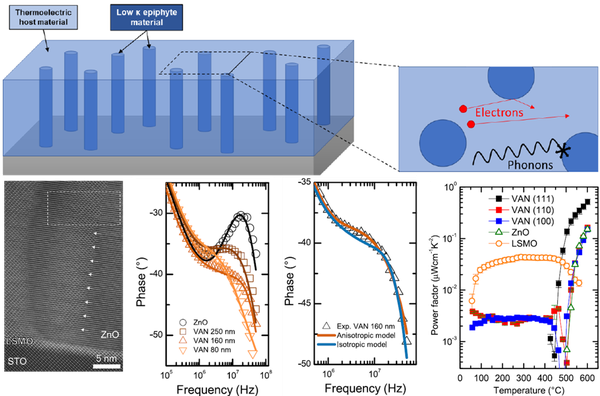Reduction of thermal conductivity by nanopillar inclusion in thermoelectric vertically aligned nanocomposites
Published 20 May 2025
Increasing energy demands and urgent challenges of climate change, are driving the research for sustainable energy technologies. Thermoelectric materials – which can convert heat into electricity – hold great promise, but improving their efficiency remains a key challenge due to the trade-off between electrical and thermal conductivity. A collaborative study led by Prof. M. Huijben’s group at the University of Twente, with thermal characterization by Dr. A. Sarantopoulos (PGI-7, FZJ) at Prof. F. Rivadulla’s group at CiQUS (University of Santiago de Compostela), presents a major advancement.
The team engineered vertically aligned nanocomposite (VAN) thin films by embedding La0.7Sr0.3MnO3 (LSMO) nanopillars into a ZnO thermoelectric matrix. This innovative structure enhances electron transport while reducing thermal conductivity by 75%, resulting in a threefold increase in thermoelectric performance at 600 °C. This work demonstrates the powerful potential of nanostructuring strategies to overcome long-standing limitations in thermoelectric materials, paving the way for more efficient energy harvesting technologies.

"Reduction of thermal conductivity by nanopillar inclusion in thermoelectric vertically aligned nanocomposites" Marijn W van de Putte, Jasman Singh Gambhir, Nicolas Gauquelin, Alexandros Sarantopoulos, Daniel Monteiro Cunha, Johan Verbeeck, Gertjan Koster, Francisco Rivadulla and Mark Huijben* DOI 10.1088/2515-7655/add76b
Citation Marijn W van de Putte et al 2025 J. Phys. Energy 7 035009

